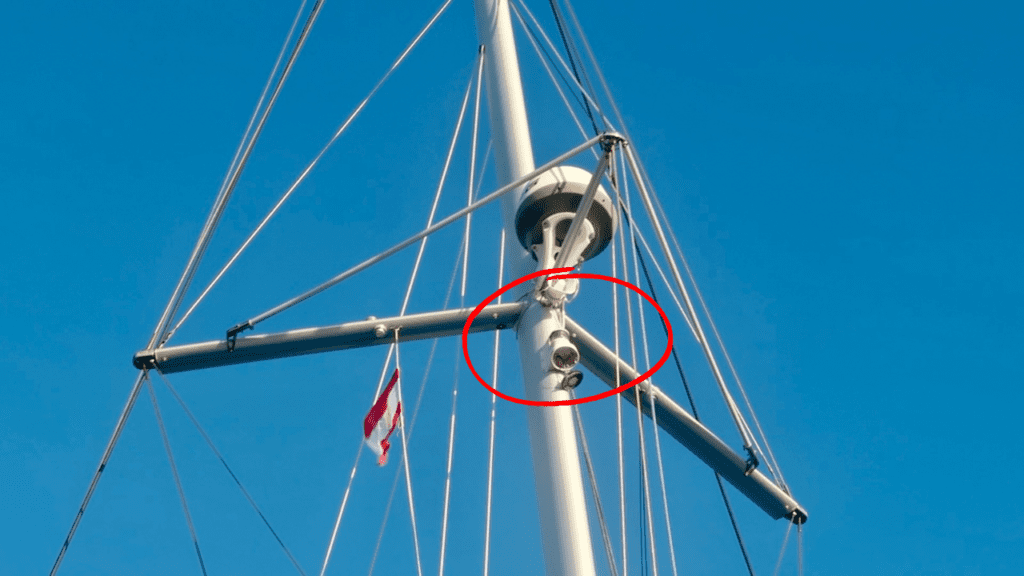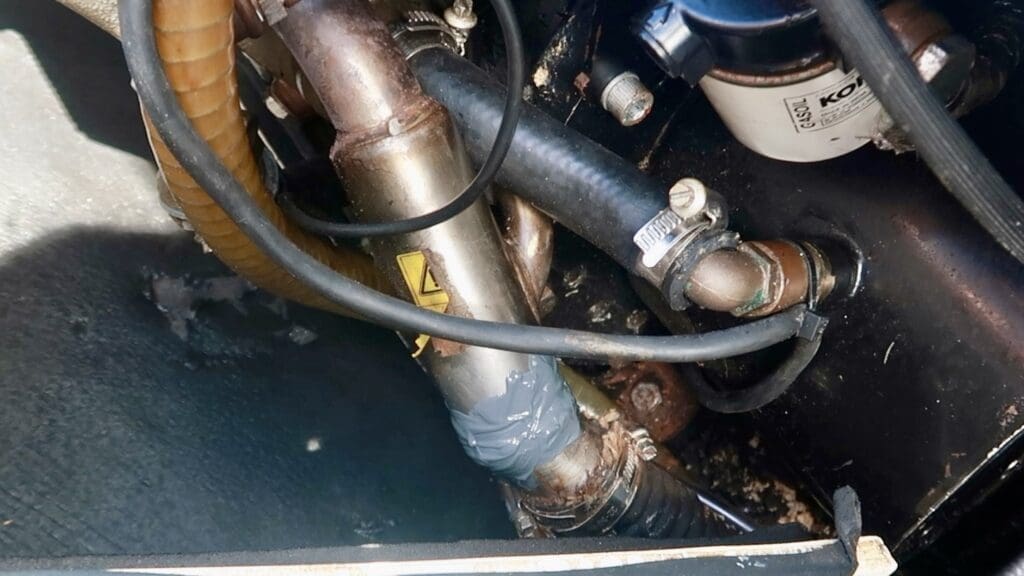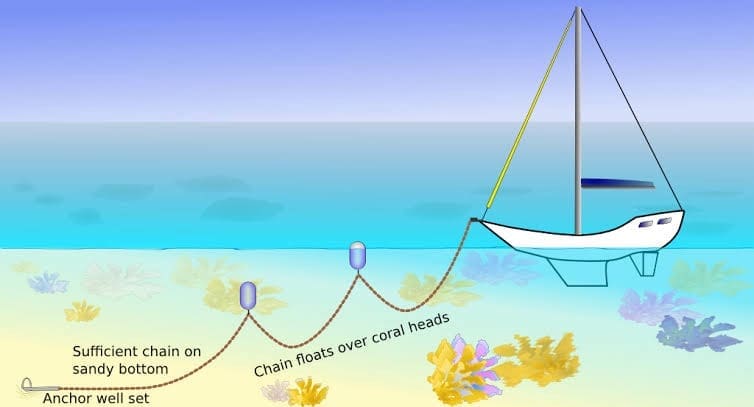Between our YouTube Channel and our blog, we share a lot of our life on the water. However, there are always things that go undocumented. Over the years, we have met plenty of new liveaboards who feel like they were “duped” into this lifestyle by its romanticized portrayal on social media. In our experience, living full-time on a boat is expensive, it is hard work, and it is time-consuming. Is it worth it? For us, yes. Is it worth it for you? I’m not sure!
So, in an effort to paint a more realistic picture of boat life, here is a bullet-point list of things we dealt with in June 2024:
- After a rough passage from the Marquesas Islands to the Tuamotus that involved a trip up the mast in the dark to fix a broken lazy jack, we noticed our deck light hanging on by a thread. Ray was able to pop it back into place easily once we were safely anchored. We think he accidentally knocked it loose while clinging to the mast underway.

- Our generator capacitor failed, so we replaced it with a spare we had on board.
- We nicked a rock near shore in our dinghy, and a small piece of our prop broke off. Although still functional, it caused vibration that could have caused future problems. So, we had a replacement flown in from Tahiti along with our grocery order. The replacement was purchased from the Yamaha store in Tahiti for $198, and we were charged an additional ~$30 to have someone pick it up and pack it with our groceries. These props are $45 each in the USA. We’re beating ourselves up for not purchasing a spare before getting here. It was on our list but got cut in an attempt to stay on budget.
- We teamed up with another boat in our anchorage to fly groceries in from Tahiti. We hope to stay in the Tuamotus for an extended period of time and supplies here are limited, so we were curious about this as a provisioning option. Although the process was easy through a company called Tahiti Crew, it cost us over $700. This included fresh fruits and vegetables, one bottle of champagne, one bottle of tequila, a small amount of meat and cheese, ½ of the fee for the person who did the shopping, and ½ of the air freight fee to get it to the atoll. Groceries are already 2-3X more expensive in French Polynesia, so I think we’ll make do with what we can find here and save the shopper and delivery costs in the future.
- We noticed a small crack in our generator exhaust elbow. We sealed it with JB Weld and noted the issue so we can properly repair it in the future.

- I polished our stainless steel once.
- Ray scrubbed the teak in the cockpit once.
- We’ve learned to float our anchor chain, something we’ve never done before! Floating your chain prevents it from getting tangled around coral heads, protecting both your chain and the coral. We found three plastic pearl farm buoys on shore and attached our own line and carabiners, which we clip to the chain as we anchor. We tried using our fenders at first, but they did not keep the chain up under the pressure. You need the rigid plastic buoys.

- We had two packages of boat parts shipped to Tahiti after our Pacific crossing. The packages included a new engine blower, preventer snubber, etc. (things that broke during our passage). To receive the packages, we had to pay a ~$200 broker’s fee (per package) to get through customs, plus a package pickup fee since we are not physically there to collect them, and an additional tax for one of the packages that contained parts the customs agent deemed “not necessary for the boat’s navigation.” In total, we ended up paying close to the packages’ value in fees on top of the ~$300 we already paid for shipping. We have yet to arrange for the packages to be forwarded to the Tuamotus, but I’m sure that won’t be a pleasant invoice either! Overall, if we need a boat part here, we now assume it will cost 3-4X its value. Our wallets are hurting. It would have been cheaper to fly to Los Angeles, buy the parts there, and fly back!

